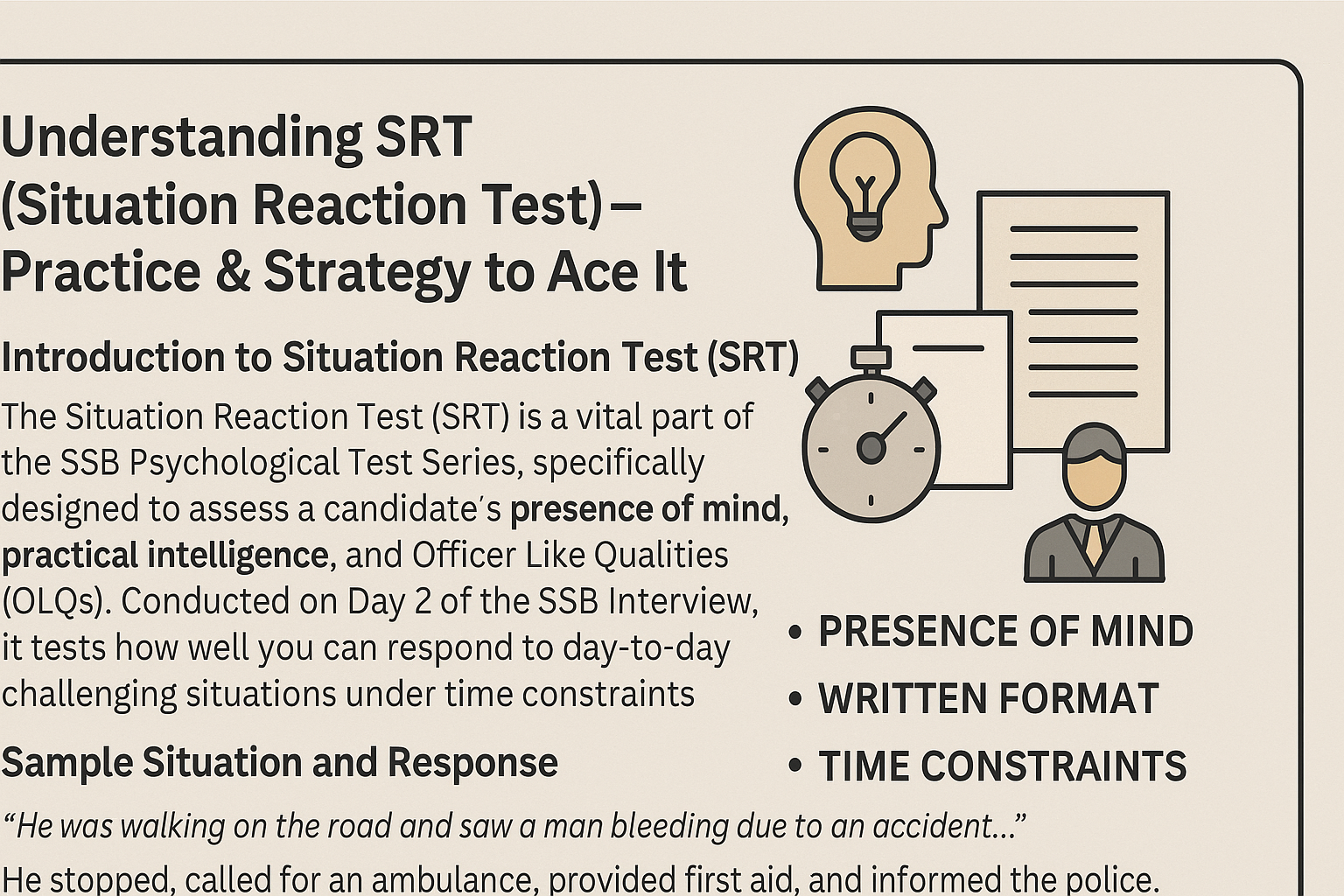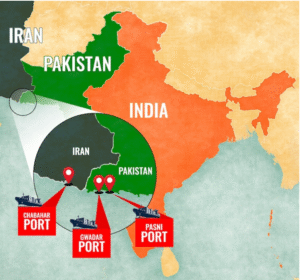Introduction to Situation Reaction Test (SRT)
The Situation Reaction Test (SRT) is a vital part of the SSB Psychological Test Series, specifically designed to assess a candidate’s presence of mind, practical intelligence, and Officer Like Qualities (OLQs). Conducted on Day 2 of the SSB Interview, it tests how well you can respond to day-to-day challenging situations under time constraints.
What is the Situation Reaction Test (SRT)?
The SRT consists of 60 everyday situations, each requiring a quick, logical, and effective response. Candidates are given 30 minutes, allowing roughly 30 seconds per situation.
These situations usually relate to:
Emergencies
Social interactions
Ethical dilemmas
Leadership and responsibility
Personal and group problems
Importance of SRT in the SSB Interview
The SRT helps SSB assess whether you can:
Think quickly and act responsibly
Remain calm under pressure
Show leadership and initiative
Demonstrate emotional intelligence
Reflect qualities of a future officer
These reactions reflect OLQs such as:
Effective Intelligence
Sense of Responsibility
Initiative
Courage
Decision-Making Ability
Structure of the SRT
Total Situations: 60
Time Limit: 30 minutes
Test Type: Written
Answer Format: One-line to short-sentence responses
Sample Situation and Response
He was walking on the road and saw a man bleeding due to an accident…
Response:
He stopped, called for an ambulance, provided first aid, and informed the police.
Proven Strategy to Ace the SRT
1. Understand the OLQs
Know the 15 Officer Like Qualities and ensure your responses reflect them naturally.
2. Be Realistic and Positive
Keep your responses practical, optimistic, and problem-solving oriented.
3. Practice Under Time Constraints
Time yourself to complete at least 45–55 meaningful situations in 30 minutes.
4. Use Short and Direct Language
Avoid long, elaborate sentences. Be concise and action-focused.
5. Avoid Memorization
Responses should feel genuine and natural, not scripted or robotic.
6. Think Like a Leader
Even in individual scenarios, think of the larger good, team effort, and timely action.
Practice Tips for SRT
| Tips | Details |
|---|---|
| Daily Practice | Attempt 10–20 new situations each day |
| Full-Length Tests | Try 1–2 mock SRTs weekly |
| Group Discussions | Share and evaluate responses with peers |
| Self-Analysis | Identify patterns and correct repeated flaws |
| Stay Updated | Reading news improves decision-making context |
Common Mistakes to Avoid
Writing vague or incomplete answers
Ignoring key stakeholders in the scenario
Being unrealistic (e.g., fighting robbers single-handedly)
Giving escape-oriented responses (e.g., running away)
Copy-pasting same actions for all situations
SRT Preparation Resources
Books:
Let’s Crack SSB Interview by SSB Crack
SSB Interview – The Complete Guide by Dr. N.K. Natarajan
Online Tools:
SSB prep websites and YouTube tutorials
Telegram/WhatsApp practice groups
Timed mock SRTs for live test experience
Final Thoughts
The SRT is not about memorized responses but about showing who you truly are under pressure. Your approach should be:
Natural
Positive
Responsible
Consistent with OLQs
With consistent practice, right guidance, and self-reflection, you can master the Situation Reaction Test and make a powerful impact in your SSB interview.
FAQs on Situation Reaction Test (SRT)
Q1. How many situations should I attempt in the SRT?
Aim to write responses for at least 45–55 situations with good quality in 30 minutes.
Q2. Is it mandatory to finish all 60 situations?
No, quality is more important than quantity. Write logical and thoughtful responses.
Q3. Can I repeat similar responses?
Avoid repetition. Each situation is unique and should show different OLQs.
Q4. Can I write in Hindi?
Yes, but English is preferred. Choose the language you’re most comfortable in.
Q5. Are imaginative answers acceptable?
Stick to realistic and practical responses. Avoid fictional or extreme actions.
Q6. What if I leave a few situations unanswered?
That’s fine. Try to answer as many as you can meaningfully within the time.







